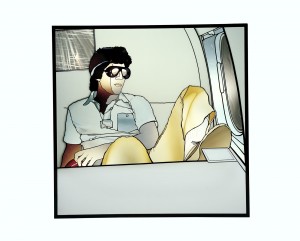Last week at Rose Cafe with featured guest, my GRF, Sara Schlemm, we discussed melancholy and its prolonged, pensive state alongside Hitchcock’s psychological thriller, Vertigo. We watched a couple of scenes, which I am not going to go into detail in for fear of spoiling, which expressed and invoked the feeling of melancholy in the viewer. Two contrasting scenes appealed to me: one scene in a flower garden bathed in sunlight and one scene in Muir Woods, which contained vast, shadowy redwood trees so tall that they hid the sky. What I found interesting about these almost contrasting scenes is that though the scenery and imagery was completely different, they both conveyed a sense of melancholy, felt by the characters and made cognizant to the viewers. This perhaps demonstrates that the feeling of melancholy can arise at any time, any season, in any environment, and that it is natural and beautiful in its own sense, much like the beauty of both types of nature in these scenes.
Relating to melancholy, here is one of my favorite pieces from the Corning Museum of Glass, where I have worked as an Explainer in the past. It is fittingly titled Melancholia, by Narcissus Quagliata, and is made in the style of traditional “stained” glass (we call it stained glass, but it’s actually colored glass, but that’s a whole other story); however, it is made modern by its simple, minimalistic design and coloration, as opposed to traditional ornate, colorful glass. The man, masked by his sunglasses, looks out the window of an airplane, giving off an aura of slight melancholy and evoking in the viewer the feeling of leaving loved ones and loved places, something external which triggers internal ache and conflict.
